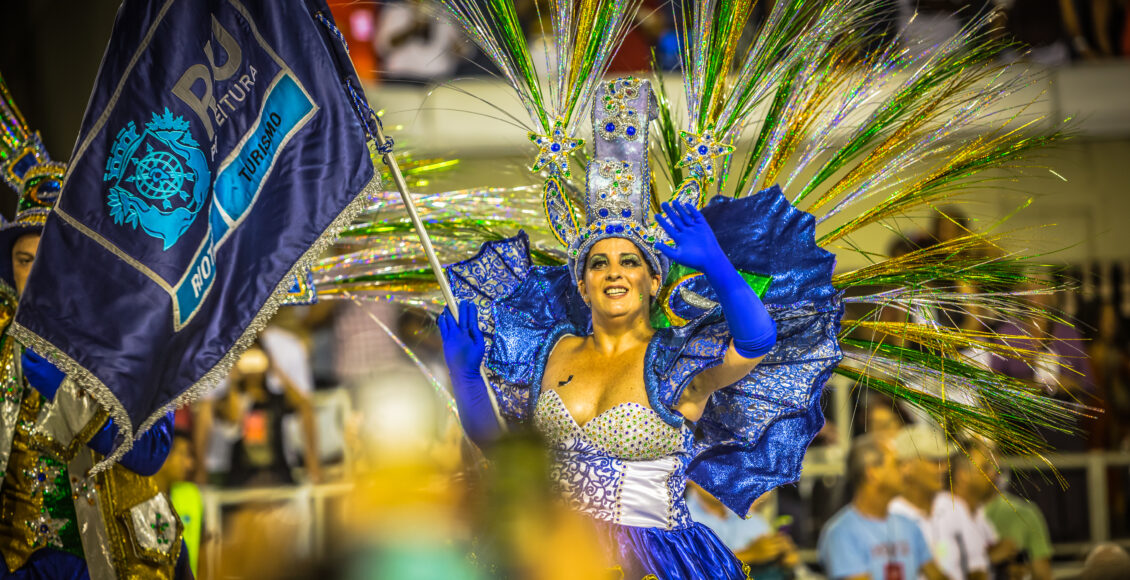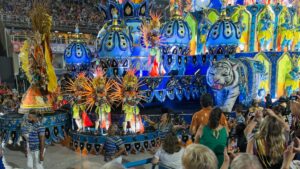More than a Festival: The Legacy of Brazilian Carnival
 2013 Brazil Carnval in Rio de Janerio.
2013 Brazil Carnval in Rio de Janerio.
It has been a month since the streets of Brazil were flooded with people, colours, and dancing in celebration of this year’s Carnival. The festival is hardly distinctive by name; what started in Medieval Europe as a Christian commemoration of the days leading up to Lent has manifested itself globally through New Orleans’ Mardi Gras, Trinidad and Tobago’s own Carnival, and even Toronto’s Caribana. As a festival that attracts 6 million daily participants in the city of Rio de Janeiro alone, Carnival has become more than just a celebration; it has turned into a cultural phenomenon that shapes Brazil’s identity.
At the heart of Carnival is samba, a music genre characterized by its upbeat rhythm and corresponding dances. Parades are held in Sambadromes, large venues that allow samba performers to show their work in a production involving costumes, lights, and floats. Outside these official parades, Brazil is also home to thousands of) ‘blocos,’ where crowds gather and continue listening to the country’s rhythms. Despite its carefree appearance, samba holds a complex historical insight into the country.

Samba originated from Afro-Brazilian communities in the late 19th century, who maintained Western African (primarily Angolan) traditions. Brazil was the last of the Americas to abolish slavery in 1888, a grave legacy that was and continues to be reflected by much of the genre. In fact, samba was initially met with much tension from state authority, which associated it with criminality, and its contemporary popularity is the product of mobilization. The creation of the first professional samba school in 1926, Deixa Falar, showed the genre for what it was: an art. In the period following that, the country saw an emergence of more samba schools, contributing to its popularization and eventual incorporation into Carnival.
Samba continued to be used as a force against the state. In 1964, Brazil’s military dictatorship was established, but samba continued to be created and listened to despite repression. In Sonho de um Carnaval (A Carnival Dream) written in 1965, musician Chico Buarque sings: “No Carnaval, esperança, que gente longe viva na lembrança que gente triste possa entrar na dança” (in Carnival, there’s hope, for distant people to live in memory, for sad people to join in dance). Buarque was nearly exiled by the government for his work.
Today, Carnival maintains its political connotations. For example, during the 2019 Carnival, former President Bolsonaro was met with intense criticism after sharing a sexually explicit clip of an occurrence at a bloco and commenting, “This is what many street carnival groups have become in Brazil.” According to Esther Solano, a political scientist at the Federal University of São Paulo, many Brazilians were outraged because he had “reduced Carnival, which is a very rich and complex cultural phenomenon, to an isolated and decontextualized scene.” Bolsonaro was a strong advocate of the nuclear family and made headlines for other comments, such as stating that he “would be incapable of loving a homosexual son.” As a response to his presidency, many of the themes around that year’s Carnival celebrations centred around expression. Michelle Krimer, a founder of Toxo Xona, a bloco dubbed Rio de Janeiro’s first LGBTQIA+ one, told the New York Times: “Since we have a president who wants us to stop existing, it’s important to have a voice. Resistance means continuing to stay in the street”.

No politician is free from criticism in the context of Carnival. In 2018, the Beija Flor samba school won Rio’s annual Sambadrome competition, with much of their costumes and decorations referring to state corruption. Only a few years prior, a series of corruption scandals had transformed the country. Operation Car Wash, which started off as a small-scale investigation of money laundering in a car-washing business, led to a trail of evidence that implicated many members of the federal government. It is what triggered then-president Dilma Rousseff’s impeachment and President Lula’s trial (the current president, who also served in office from 2003-2011). Performers of Beija Flor dressed up in suits and paraded whilst carrying containers of money, portraying politicians and government employees. Carnival is undoubtedly used as a mechanism for expressing anger against political and social issues, whether that be discrimination, state repression, or corruption.
Although Carnival will shine a light on often polarizing issues, it has also been a uniting force. Brazil is not a very integrated state; it has one of the world’s highest GINI coefficients at 47.1, and the upper and lower classes seldom have many interactions with each other. The former often spends their days in gated communities. However, since most of the country participates in Carnival, it transcends demographic boundaries of young and old, rich or poor and, as discussed, political affiliation. Many blocos are still separated by neighbourhoods, and class inequalities remain, yet Carnival increases the opportunity for collective spaces that are not seen throughout the year. Parade organizer Rodrigo Guima, in an interview with ColorsxStudios, says that “being allowed to break away from the rigidity of everyday life and social structures is still very important to the festival.” Participating in the festivities can often mean a rest from issues present in day-to-day life. Although it seems like a paradox given the political undercurrents of Carnival and the need to emphasize them, some feel as if an escape allows one to imagine and plan a better future. Guima says, “We need to remember how to dream again and to dream collectively. Then we’ll be able to move together in the next step”.
The ability of civilians to express themselves through Carnival has made the festival an outlet for both escape and highlighting Brazil’s problems. This is particularly important for communities with little power of political expression. In this way, the festival symbolizes a continuous return to tradition throughout different cultural contexts with the time and the person. So, what is Carnival to Brazil? It is a party, a community and a revolutionary force, one that will stay with the country for centuries to come.
Edited by Anna-Sophia Everett.
Featured image: “Rio Flag Begins” by Joseph King is licensed under CC BY-NC-ND 2.0.
